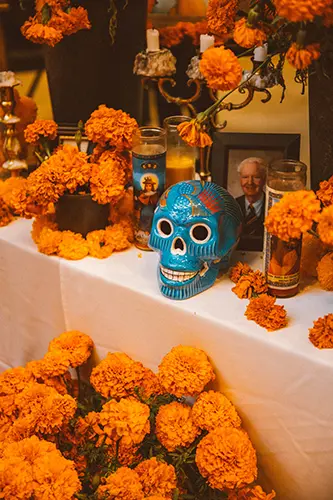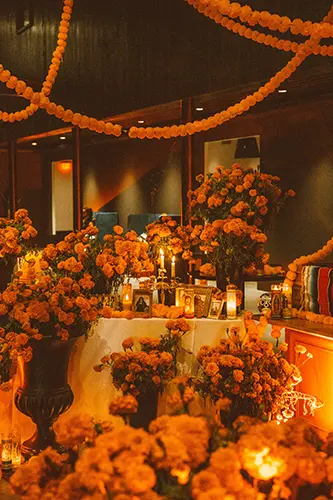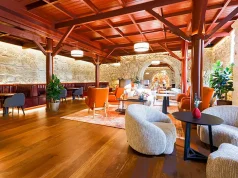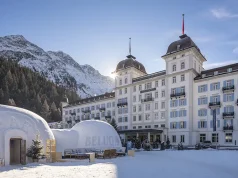
A month marked by change, October brings cooler weather and the start of a season of cultural festivities. For Crossroads Hotel in Kansas City, who hosts a yearly celebration for Dia de los Muertos in partnership with the Mattie Rhodes Art Center & Gallery and the Kansas City Museum, this time of year is particularly special.
On October 27th, the property will be hosting La Fiesta, where community members and guests are welcome to enjoy authentic food and festivities as part of the property’s annual Dia de los Muertos celebration.



Crossroads Hotel has enlisted the help of various local vendors to help bring this celebration to fruition. Upon arrival, guests will be welcomed by a breathtaking ofrenda, covered in cempasúchil flowers and memorabilia to help guide late loved ones to the afterlife. Traditional Mexican folkloric music will fill the air as light bites and specialty cocktails are served. Stations will be set up for attendees to create alebrijes-inspired masks and receive complimentary face paint while StoneLion Puppet Theater entertains with puppetry, unique to the Crossroads property itself.
Throughout the weekend, the lobby will be dedicated to honoring those who are no longer with us in observation of the holiday.
Día de los Muertos or Day of the Dead is a traditional Mexican holiday that celebrates and honors deceased loved ones. This multi-day holiday, which takes place on November 1st and 2nd, is a synthesis of indigenous Mesoamerican beliefs and Catholic teachings. It’s a colorful, vibrant, and deeply meaningful celebration that has been recognized as part of the intangible cultural heritage of humanity by UNESCO. Here’s a brief overview:
Origins: The origins of Día de los Muertos can be traced back to ancient Mesoamerican cultures, including the Aztecs and Mayans, who had rituals celebrating the lives of deceased ancestors. With the arrival of Spanish colonizers and the spread of Catholicism in the 16th century, indigenous traditions merged with Christian customs, leading to the present-day fusion of beliefs.
Dates and Significance:
- November 1st is typically known as “Día de los Inocentes” or “Day of the Innocents,” dedicated to deceased children.
- November 2nd is “Día de los Muertos” or “Day of the Dead,” where adults who have passed away are remembered.
Altars (Ofrendas): Families create altars, often in their homes, adorned with flowers, candles, food, and photographs of the deceased. The ofrendas are a way of inviting the spirits to visit the living. Among the items typically placed on altars:
- Marigolds: These bright orange flowers are believed to attract souls to the offerings.
- Food and Drinks: Favorites of the departed, such as pan de muerto (a special bread) and beverages, are placed on the altar to nourish the spirits after their journey.
- Photographs and Personal Items: These help families remember and celebrate their loved ones.
- Papel Picado: Colorful paper banners with intricate designs that represent the fragility of life.
Calaveras and Calacas: Skulls (calaveras) and skeletal figures (calacas) are prevalent symbols. Sugar skulls, often with the name of the deceased or living written on them, are common gifts. These symbols are not meant to be scary; instead, they portray death in a more friendly and approachable manner.
Cemetery Visits: Families often visit cemeteries to clean and decorate gravesites with marigolds, candles, and other offerings. It’s a time for communal singing, eating, and reminiscing.
Philosophy: Rather than mourning the loss, Día de los Muertos is about celebrating the life and memory of the deceased. It’s a reaffirmation of indigenous beliefs that death is a natural phase in life’s continuum and that the dead remain a part of the community, kept alive in memory and spirit.
The significance and customs of Día de los Muertos vary across regions in Mexico, and the holiday is also celebrated in various forms in other parts of Latin America and the United States. Over time, the Day of the Dead has grown in popularity worldwide, both as a cultural celebration and an artistic inspiration.





